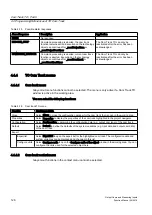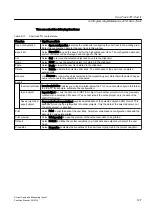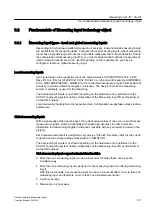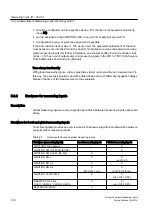
;$
;$
;(
;(
˂;$
˂;(
9
9
*OXHDSSOLFDWLRQWRSURGXFWYLD
JOXHQR]]OHV6KRZQZLWK
GLIIHUHQWYHORFLWLHV99
2XWSXWFDPFRQWUROVVWDUWDQG
HQGSRLQWVRIJOXHDSSOLFDWLRQ
Figure 4-29 Offset of the output of output cam through dead times (dead time compensation)
Procedure:
1. Set all actuation times for start of output cam (activation time) and end of output cam
(deactivation time) to 0.
2. Define the velocities for which the positions are to be determined. You should select two
velocities that correspond to velocities that occur during production (e.g. minimum and
maximum velocity).
3. Start the application and determine the start positions (x
A1
and x
A2
) and end positions (x
E1
and x
E2
) of the line of glue for the velocities v
1
and v
2.
Note
To increase the accuracy, you can perform several comparison measurements and use
the average measured values.
4. You can determine the actuation times for the output of output cam using the following
formula.
t
activation
= Δs/Δv = (x
A2
-x
A1
)/(v
2
-v
1
)
t
deactivation
= Δs/Δv = (x
E2
-x
E1
)/(v
2
-v
1
)
Cam Track TO - Part II
4.3 Configuring the TO Cam Track
Output Cams and Measuring Inputs
Function Manual, 04/2014
117
















































